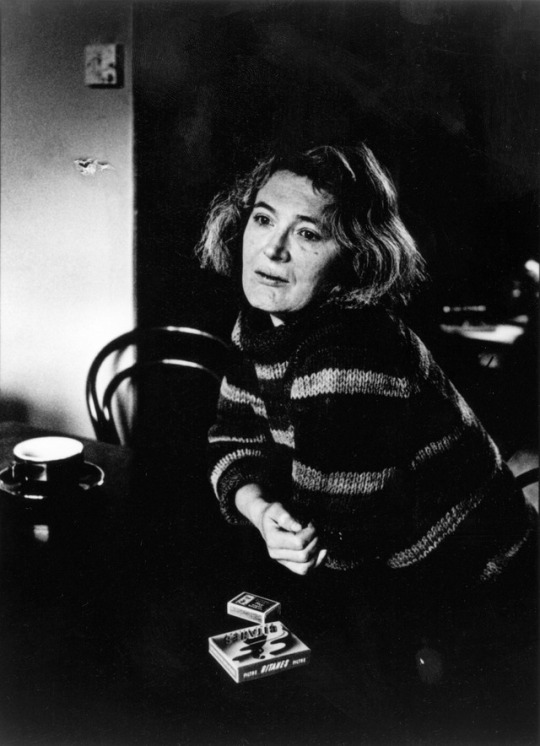#kill your double and it will involve a mirror also live rent free in my head
Explore tagged Tumblr posts
Text
"Be proud of your place in the cosmos. It is small, and yet it is."
Night Vale had some of the BEST one off quotes that would just suckerpunch you in the chest leave you breathless
Like the one that stuck with me was this one:
"when a person dies and no one will miss them, the mourning is assigned to a random human. This is why sometimes you just feel sad."
It's been almost 11 years... It haunts me in a good way
#and of course: now more than ever we are full of blood and honey#idk why that stuck with me#kill your double and it will involve a mirror also live rent free in my head#wtnv
37K notes
·
View notes
Link
Once the standard of beauty for Egyptian homes consisted of a lot of gold. Baroque furniture reigned supreme and there was plenty to do; You really wanted to cram as much in there as possible to show that you can’t afford to fill in the blanks. And all the pieces were unsightly and looked like discarded from the private collection of King Louis XIV. ZIS EEZ Not what I asked for! take it away. More of Zee Gold! And a baguette!
but I digress. The time of baroque is over and boho chic has arrived in the form of the trend du jour, wearing a kaftan made of organic silk and eating something like an avocado. It’s more relaxed, it’s more airy, it’s more earthy—and it’s a little more spacious, to be honest. You really want your things to look like they’ve weathered several storms and were found washed up on a far-flung beach, looking casually luxurious, with wood completely painted over. Instead it got worse. You want your rugs to be a bit discolored, which is a sign to my mom that the carpet is old, used, and to be discarded immediately, but to me it means I found a gem and I want it Can’t wait to display it at its most tattered. I might turn my feet on that for extra measure.
There are now dozens of furniture, home accessory, and interior design brands in Egypt with stunning pieces that satisfy all your bohemian daydreams. What the whole ‘boho chic’ really is at its core is the absolutely carefree and sober decor; This often involves layering and/or mixing colors, patterns and textures. You can either go in a color direction with a more funky-pattern-and-clashing-print kind of vibe, or you can opt for a more neutral palette, which takes on a more Scandinavian feel. There is no one right way to do it and there are a thousand and one variations. Unless you forget the macramé. You should never forget macros.
Below are 13 brands in Egypt where you can find pieces that align with your bohemian decor. Obviously, if you don’t want to go full boho, you can sprinkle in your favorite pieces.
Pacific OaksThe brand focuses almost exclusively on neutrals and they’ve got everything from hammocks and swing chairs—clearly of the Macro variety because what kind of self-respecting bohemian brand doesn’t use Macrom—to handmade custom rugs. They’ve got a super cute variety of poufs as well as some larger pieces like some sofas and the most comfortable looking bed—the bed frame is basically a giant pillow and the mattress is tucked in. They are based out of both Egypt and the United States and actually ship worldwide.
INCA

Since its launch a few years back, Inca has undoubtedly taken over the market with eclectic boho prints. Her style leans more toward colors rather than neutral tones, though you’ll find a fair amount of pieces embodying the latter. A big part of the boho aesthetic is mixing colors and patterns with abandon, and the Inca have the perfect prints for that. Their main attribute is fabric, so you can upcycle large furniture pieces, but they also have some lovely cushions—the floor and throw—and most recently, these incredible woven baskets that you can use to do laundry. There are, to store your children’s toys, or in my opinion, as plant pots. Be careful, they are a bit expensive.
kilim

The specialty of this Fair Trade Certified (WFTO) brand is, as their name suggests, kilims, a type of hand-woven rug made using specific weaving techniques. They work with Egyptian artisans who consider the craft to be part of their heritage. You can select colors or neutrals, and choose the size you like, and one of the nifty little services they offer is a sort of try-before-you-buy option, so they give you a Send the piece to your home, you can see how it works for your location, and send it back. He has also recently added quilts, pillows, and some pottery pieces to his repertoire.
Mama Bear N Company

If you’re looking for a macramé wonderland, look no further. Beautiful, intricate macrame wall decor is their strength, but they also have some pretty great swing chairs, including a particularly epic loveseat. The brand is big on pale neutrals and their pieces also incorporate a beachy vibe with many beautiful bamboo furniture pieces like their beach mirror and their Flower sofa.
Lush Design House

Lush focuses mainly on large pieces; Sofas, beds, cabinets, full dining sets, and so on, so if you want to properly furnish and not just accessorize, this is a great choice. Their style is a kind of boho-Mediterranean mix and they feature lots of light neutral tones for versatile long-term pieces.
petal and stem

It may seem like a random choice, but dried flowers not only have a whole boho vibe in their own right, but they’re also the coolest kind because they’re already dead, making them completely likely to kill themselves. ends. And they basically last forever. Dried flowers have a more pastel palette, so the colors aren’t as loud, and the petal end stem does a lovely job of creating dried bouquets. Having said that, if you want really funky and unique (live) flower arrangements, colors that pop more, the brand does too.
mashtal

A big part of the whole boho vibe is the a ton of lush greenery throughout the space. If you’re confident in your plant’s parenting abilities and want an alternative to dried flowers, the Mastall has a beautiful variety of plants as well as pots to store them. And granted, you can go to an actual mast (a greenhouse) where they may cost less, but this brand delivers the plants to your home, which is placed in the pot of your choice (and if needed). Will make a pot again for you too).
home design

If you spend an inordinate amount of time plunging into the ‘boho chic decor’ vortex on Pinterest, chances are you’ll be able to pick out a few key pieces from Casa Design to bring your bohemian vision to life. While they have a plethora of home items like planters and lamps, recently they have also added several smaller furniture pieces to their roster such as consoles and even an entire dining set. A lot of their recent pieces involve canning, which is having a big moment right now, and their flavored coffee tables are standout items as well.
choose meticulously

If you’re looking for an array of boho inspired home accessories—with lots of rustic, wood-based pieces—then this is a good place to find them. They have lots of wooden side tables in interesting shapes, jute items like mirrors, and a plethora of pottery, some with more classic shapes, and others that are a lot more quirky and unusual. Using natural elements and raw materials such as wood and clay has a great boho mood.
cord and knot

There’s another group of macrame masterminds with gorgeous elaborate wall hangings, but they take it a step further; For example their new Tokyo backdrop is a giant macro piece that can be rented for weddings and events. They also have some beautiful plant holders, and most importantly, the large plant pot can come with a cushion and double as a hanging cat swing. I said what I said.
Ellie Home Decor

On the brighter end of the color spectrum, Ellie is a well-established brand focused on handmade ceramics in fun colors. The defining aspect of Ellie is how cute and colorful all of her pieces are, which lean perfectly into her boho aesthetic. And while people don’t automatically think of tableware when they imagine boho, the same can apply to the pieces in your kitchen, not just your living room. And don’t feel like all your tableware has to match; Feel free to mix different colors together to add some eclectic energy – especially if you’re not brave with color in your living space. They also have a funky marbled blue fondue pot.
tayets

If ‘Jute Fringe’ is a word that resonates with you and you don’t think it’s the name of a new indie band, this brand will be your salvation. Baskets in a variety of shapes, sizes, and colors—they have loads of neutral tones, but they also have some fun colorful pieces. And while a basket may not automatically come to mind when picking up household items, once you start accumulating clutter, you realize these often-overlooked babies are waiting in the wings, until you can. They don’t understand their true value.
Bya House

The word boho incorporates a lot of elements and Maison Baya’s version has a distinctly tribal twist. His pieces are inspired by African culture, his first collection being a series of patterned cushions in earth tones made from Bogolan, a thick hand-woven fabric imported from Mali that has been dyed with fermented clay. A big part of the boho aesthetic are accents from all over the world and these throw pillows are perfect for mixing and matching and throwing on your sofa.
can limon

The retail progeny of iconic eatery The Lemon Tree & Company, Can Limon is a real hotspot for all things boho. Although a large portion of their store is devoted to clothing and general apparel, they do have a few pieces of home decor. They offer both their own collection as well as eclectic pieces from other boho-minded stores across Egypt. Candle holders, throws, mirrors, prints, and even some tableware are featured in their store’s impressive collection. Keep in mind, upscale boutiques are a bit pricey.
!function (f, b, e, v, n, t, s) { if (f.fbq) return; n = f.fbq = function () { n.callMethod ? n.callMethod.apply(n, arguments) : n.queue.push(arguments) }; if (!f._fbq) f._fbq = n; n.push = n; n.loaded = !0; n.version = '2.0'; n.queue = []; t = b.createElement(e); t.async = !0; t.src = v; s = b.getElementsByTagName(e)[0]; s.parentNode.insertBefore(t, s) }(window, document, 'script', 'https://connect.facebook.net/en_US/fbevents.js'); fbq('init', '467413490301320', { em: 'insert_email_variable' }); fbq('track', 'PageView');
!function (f, b, e, v, n, t, s) { if (f.fbq) return; n = f.fbq = function () { n.callMethod ?
n.callMethod.apply(n, arguments) : n.queue.push(arguments) };
if (!f._fbq) f._fbq = n; n.push = n; n.loaded = !0; n.version = '2.0';
n.queue = []; t = b.createElement(e); t.async = !0;
t.src = v; s = b.getElementsByTagName(e)[0];
s.parentNode.insertBefore(t, s) }(window, document, 'script',
'https://connect.facebook.net/en_US/fbevents.js');
fbq('init', '197158124760900');
fbq('track', 'PageView');
(function (d, s, id) { var js, fjs = d.getElementsByTagName(s)[0]; if (d.getElementById(id)) return; js = d.createElement(s); js.id = id; js.src = "http://connect.facebook.net/en_GB/sdk.js#xfbml=1&appId=184586718278101&version=v2.3"; fjs.parentNode.insertBefore(js, fjs); }(document, 'script', 'facebook-jssdk')); Source
The post 14 Egyptian Brands That Will Give Your Home Boho Vibes appeared first on Spicy Celebrity News.
0 notes
Photo

She Escaped To Become Original.
The relationship between a biographer and his or her subject often takes the form of a one-sided love affair. When the subject is a person of ill repute or a criminal the chances of an attachment are of course less—the most that may usually be managed is a fascinated repulsion. But with a writer, ardent involvement is almost always present, at least at first. After all, the lover and the beloved already share a profession, and the biographer cannot help but feel that he or she understands the subject’s inner life and professional struggles. The fact that this is in effect a love affair is often confessed in public and also in print, at the very end of the acknowledgments in the finished book, when, after thanking interviewees and researchers and editors, the biographer apologizes to his or her spouse or partner for what sounds rather like an adulterous affair, one that diverted time and attention, if not affection and passion, from a real-life partner.
These imaginary adulteries are not one-night stands. The average serious literary biography appears to take about five years of research and writing, and ten years or even more are common when it runs to two or three volumes. Almost always the task involves extensive travel, hours hunched over a computer while your partner or family go on with their lives, and long conversations with strangers in expensive restaurants, bars, and coffee shops. Edmund Gordon is clearly a serious and gifted biographer. He has worked hard, traveling all over the world to speak to people who knew Angela Carter and reading every scrap of her writing he could find. His title, The Invention of Angela Carter, announces both that Carter was a tremendously original writer with a marvelous gift of invention and that, as he puts it, “The story of her life is the story of how she invented herself.”
Gordon discusses Carter’s writing with skill and sense. He also manages to make her self-invention understandable and even sympathetic. He does not leave anything out, but he does sometimes include so much prosaic detail—the names of people she knew, the geography of the places she lived—that astonishing information sometimes flares up like a burst of flame on a damp log. You put the book down, asking yourself: Wait a second. Did he just say that after she slept with the husband of one of her best friends, Jenny, Carter wrote in her journal:
It is good for my ego (happiness is ego-shaped) to see myself as [John] sees me, a sweet, cool, flower in the sun; &, especially as [Jenny] sees me, an exotic, treacherous femme fatale…. I wish Jenny would try to kill herself.
One way to understand this sort of thing is to see it as a statement from someone who is trying to reinvent herself after a truly oppressive childhood. Psychologists have suggested that there are two classic early fears, both deftly portrayed in the folktale “Hansel and Gretel”: the fear of being abandoned and the fear of being consumed. For most of us, one of these anxieties is dominant. Angela Carter grew up with a mother who, like the witch in the fairy tale, overfed and confined her. According to Gordon, “She was an intensely loved and thoroughly spoiled child, heaped with gifts and goodies:…chocolate and ice cream and books…. She was never put to bed until after midnight.” Soon Angela was a very fat little girl who at eight already weighed “six or seven stone” (between eighty-four and ninety-eight pounds), with a bad stammer and no friends.
Her father, who worked as a night editor for the Press Association, was seldom home, and outside of school hours Angela spent most of her time with her mother, Olive, who monitored her every move: “Even when she was ten or eleven, she wasn’t allowed to go to the lavatory on her own. She was made to wash with the bathroom door open well into her teens.” She was also forbidden to go out with boys, and spent most of her free time at home, reading and writing stories. It is not surprising that her early novels and tales often feature lonely girls who are imprisoned in sinister houses or castles.
What is most remarkable is that Carter was able to escape from the gingerbread house. When she was seventeen she suddenly went on a serious diet. Gordon, though he puts this politely, does not quite believe her claim of having become an anorexic and weighing less than eighty pounds, since none of the friends or relatives he interviewed confirmed it. But in any case she eventually stopped dieting and settled into the normal weight range for her height. She also began to defy her parents: “She came to enjoy provoking Olive, and saying whatever she thought would go down worst, usually something iconoclastic, blasphemous or obscene.” It was a game Carter continued to play with anyone who struck her as pretentious or uptight, and one, according to reports, she never ceased to take pleasure in.
Angela Carter was a brilliant student, and her teachers encouraged her to apply to Oxford; but she refused after Olive declared that if she was admitted they would rent a house there to be close to her. When she left school at eighteen, her father found her a job on a local newspaper, the Croydon Advertiser. Angela Carter took the job, she later said, “kicking and screaming,” though soon began to enjoy it. But she was still living at home and quarreling with her parents. She was miserable and full of self-hatred: later she described herself as having been at the time “a great, lumpy, butch cow, physically extremely clumsy, titless and broadbeamed.”
She was also, obviously, a very determined and courageous person. Not only did she transform herself, in a few months, from a fat, frightened, awkward teenager into a skinny Goth beatnik, she managed to escape from Croydon. In 1959, at nineteen, she met her first boyfriend, a twenty-seven-year-old industrial chemist and folk music fan called Paul Carter, and the following year she married him. In 1961 Paul got a job teaching at what would become City of Bristol College, and she moved finally and decisively out of her parents’ claustrophobic world. She began taking courses toward a college degree, and in 1962 published her first short story.
All was not well, however. As Angela Carter later wrote in her journal, “Marriage was one of my typical burn-all-bridges-but-one acts; flight from a closed room into another one.” Though they seem to have been happy at first, she and Paul were not temperamentally suited; Paul was given to “gloomy spells and touchy, drawn-out silences.” He resented her (lifelong) reluctance to do any housework, though she was an enthusiastic and gifted cook.
Once she had finished her degree, most of Angela Carter’s time was devoted to writing. “My first husband wouldn’t let me get a job after I graduated from university,” she said in 1980. “So I stayed at home and wrote books instead, which served the bugger right.” Gordon tactfully calls this an “exaggeration,” and reports that in fact Paul, who “was never very supportive of her writing,” seems to have put pressure on Angela to find a job. Luckily for her readers, he did not succeed, and over the next decade she published three novels and dozens of articles and stories.
Edmund Gordon has admirably avoided what is known as the biographical fallacy: the attempt to explain a writer’s work by the facts of his or her life. But a reviewer, whose observations will soon dissolve into wastepaper and weak electronic pulses, can be more casual and speculative. It seems quite likely to me that a fat, clever girl with no friends who spends the first seventeen years of her life in a gingerbread house in suburban middle-class South London, reading avidly and incessantly, will have limited experience of life. Her conceptual world, on the other hand, may be rich and full and colorful, populated by the dramatic characters and events—both historical and fictional—that have excited her imagination.
Most writers take off from the worlds they have known. Angela Carter’s stories and novels, on the other hand, can be seen as inspired principally by dramatic historical figures like Baudelaire and Edgar Allan Poe and Lizzie Borden, plus a rich imaginative universe of witches and ghosts and princes and princesses, magicians and clowns, werewolves and vampires, mad scientists and evil aristocrats, incestuous siblings, and murderous seducers. It is a world that would make her simultaneously one of the most derivative and the most original of writers.
Angela Carter’s first published story, “The Man Who Loved a Double Bass,” was a remarkable achievement for a twenty-two-year-old. Its hero hangs himself when his beloved instrument is destroyed. Already, the prose is strikingly good: “Darkness came with the afternoon, dragging mist with it…. [It] fell around their shoulders like a rain-soaked blanket.”
Her first three novels, Shadow Dance (1966), The Magic Toyshop (1967), and Several Perceptions (1968), are set in contemporary Bristol and London, in an intensely emotional counterculture landscape of disguise and artifice, sex, and violence, and they were well reviewed. Later she ranged further in space and time, often setting her stories in a world of fantastic characters and melodramatic events, vast wealth, and violent passions; a world as far as possible from the one she had grown up in. As she put it in her appendix to the story collection Fireworks (1974):
I’d always been fond of…Gothic tales, cruel tales, tales of wonder, tales of terror, fabulous narratives that deal directly with the imagery of the unconscious—mirrors; the externalized self; forsaken castles; haunted castles; forbidden sexual objects.
Carter’s new persona was equally vivid. She started dyeing her drab brown hair with henna, and for the next twenty years was a striking five-foot-nine redhead. She dressed dramatically, often in black, chain-smoked, and liked to say shocking things and use coarse words. She claimed to despise classic authors like Henry James and W.B. Yeats, and “formed an intense dislike for Jane Austen.” Her attitude toward contemporary British writers, especially women, was unfriendly: at a public reading she went up to the realistic novelist A.S. Byatt, whom she had never met, and said: “My name’s Angela Carter. I recognized you and I wanted to stop and tell you that the sort of thing you’re doing is no good at all. There’s nothing in it—that’s not where literature is going.” But she was not always comfortable with the impression she was making, and wrote in her journal:
I talk about myself too much instead of watching other people, I try & exhibit my own original and exciting personality—whereas I am, in fact, merely a stupid young bitch…
Soon Angela Carter had a reputation as someone who would say anything and take any risk. It was not all talk: when Several Perceptions won a prize of £500 in 1969, she used the money to go to Japan for a month, although she knew no one there and could speak no Japanese. Halfway through her stay she met a twenty-four-year-old college dropout called Sozo in a coffee-house, and went with him to a Tokyo “love hotel.” Almost at once, she was in love. When she returned to England two weeks later she did not return to her husband Paul. She also did not see her parents until that December, when she heard that her mother was in the hospital with a heart attack. According to Gordon, Olive “took one look at her and turned her face to the wall.” She died soon after, having cut her daughter out of her will.
In April 1971 Carter moved to Japan to live with Sozo, first in Tokyo and then in a nearly deserted winter beach resort where she began to write her controversial magic-realist fantasy, The Infernal Desire Machines of Doctor Hoffman (1972), which a few readers, including Salman Rushdie, consider her best work. Others have found it both lurid and baffling. As Gordon says, it is set in “a dream-version of Tokyo” in which the narrator-hero, Desiderio, who is based on Sozo, pursues the evil Dr. Hoffman through a series of fantastic supernatural worlds full of exotic and in some cases violent and cruel sexual customs, all graphically described.
Passionate as it was, Carter’s relationship with Sozo had problems. Sozo was younger than she, and not really ready to settle down. As a Japanese man, he expected a woman to stay home at night and mind the house while he went out drinking with friends, often not returning until the following morning.
In April 1972, Carter went back to England to do publicity for her newest novel, Love. When she returned to Tokyo a little over two months later, Sozo was not there to meet her as he’d promised. When she finally tracked him down, he told her that he had slept with three women while she’d been away. A week afterward the affair was over. Carter always maintained that the break was her idea, but Gordon does not believe this. For the first time in her life she was the rejected one, and it hit her hard:
She returned to worrying that she was unattractive and unlovable, and that her work wasn’t any good. All the same, she had enough self-awareness to realise that she hadn’t objectively changed when Sozo left her.
She stayed on in Japan, writing and seeing expatriate friends; for a week she worked as a bar hostess, but quit when she found she was expected to go home with at least some of the patrons. In November 1972 she took up with a nineteen-year-old Korean called Kō who spoke very little English. The relationship made her happy, but she didn’t take it very seriously, though she did spend the New Year holidays with him and his parents in Osaka. In the spring she returned to England; Kō desperately wanted to go with her but she discouraged him. Back home she wrote in her journal, almost as Lieutenant Pinkerton might have written of Madame Butterfly:
I can’t think what will come next or who will come next; Kō is in my heart, for ever, and maybe I do not want time to blur his perfection at nineteen, his warm, clean, golden flesh, his eyes like the hearts of anemones…. You can’t possess people; you only borrow them for a time.
Carter’s stay in East Asia was the source not only of The Infernal Desire Machines of Doctor Hoffman but of two of her most brilliant early stories, “A Souvenir of Japan” and “The Smile of Winter.” They are clearly autobiographical: the narrator sees her lover in great detail, but as an object. “I should have liked to have had him embalmed and been able to keep him beside me in a glass coffin, so that I could watch him all the time….” She realizes that both of them are engaged in a kind of intense sex tourism. “He found me, I think, inexpressibly exotic.” She is also enthralled by the mannerist style and elegant formality of Japan, and eager to take part in the performance: “Here we all strike picturesque attitudes and that is why we are so beautiful.” The darker side of the culture especially fascinates her: “This country has elevated hypocrisy to the level of the highest style. To look at a samurai, you would not know him for a murderer, or a geisha for a whore.”
After Angela Carter returned to live in London in 1972, her reputation and confidence increased. She published more novels and many stories, essays, and reviews, and bought a house in South London. The Company of Wolves (1984) and The Magic Toyshop (1987), two films based on her work, appeared; she joined the board of Virago Books and was recognized as one of Britain’s leading feminist writers. In the fall of 1974 she met a young carpenter from Bristol called Mark Pearce who was working on the house across from hers. Angela described him as looking “like a werewolf,” but in fact he was essentially stable and kind. They soon became lovers, and Mark moved in with her. They would be together for the rest of her life, and he was the father of her son Alex, born in 1983.
The most difficult task for a biographer, in the long run, is not how to write both sympathetically and honestly about a subject’s bad times and bad behavior, but how to keep the reader’s attention when all the news is good. As Penelope Fitzgerald put it, “The years of success are a biographer’s nightmare.” Gordon’s book inevitably loses some of its dramatic interest as he reaches the years when Angela Carter was living happily with Mark and Alex. Now we hear a steady rising melody of achievement and recognition: respectful interviews, favorable reviews, escalating advances and sales, meetings with other famous people, trips to writers’ conferences, literary and film and theater projects, and well-paid gigs as a visiting writer at top universities all over the world.
At the same time, a new Angela Carter gradually emerged. She stopped dyeing her hair and wearing all black. I remember her during this period at a literary festival in the garden at Charleston, the former home of Duncan Grant and Vanessa Bell: a tall, slightly smiling woman with long white hair in a long pale blue sweater and a flowered Liberty print skirt, like a benevolent ghost from the Bloomsbury years.
But it was not just Carter’s outward appearance that had changed: now she was often described by journalists as a warm, affectionate wife and mother, and/or a wise, generous, and benevolent white witch or fairy godmother, with magical narrative and imaginative powers. According to people who knew her well, and to her biographer, this wasn’t a pose. It seems very likely: after all, happiness is usually good for the character. “I haven’t always been nice,” she used to say to interviewers, but nobody believed her. Though she never became close to any contemporary woman writer, she was loved and admired by her agent, her editor, and many friends.
Meanwhile her reputation kept on growing. In 1979 she published two of her best and most famous works: The Sadeian Woman and the Ideology of Pornography and The Bloody Chamber. The first is a remarkably erudite and ardent examination of the way that men have limited women to the roles of victim and victimizer, or virgin and whore, with a proposal for an alternative myth in which a good woman can be both strong and passionate; it is still widely read and a set text in college courses.
The second, The Bloody Chamber, dramatically illustrated these ideas. It is a brilliant revision of some of Grimm’s best-known stories, and presents striking alternatives to the characters and plots of the old tales. In the title story, the bride of the wicked marquis, a Bluebeard figure, is rescued not by her brothers, as in the original, but by her mother, who rides into the castle on a rearing horse and shoots the murderous husband with a revolver as he is about to cut off her daughter’s head. In “The Tiger’s Bride,” a revised version of “Beauty and the Beast,” the Beast does not become human; instead Beauty joyfully, and perhaps metaphorically, turns into a tiger herself.
In Angela Carter’s next two novels, Nights at the Circus (1984) and Wise Children (1991), she continued to take off from the historical and literary persons and scenes that had always inspired her. But now she moved from the exotic and fantastic worlds of her earlier work into a more familiar and local territory. Instead of Surrealism and fairy tales, she drew on Shakespeare and music-hall comedy. In Nights at the Circus there are still both historic and fantastic elements: its narrator is a journalist based on the young Jack London; and its heroine, Fevvers, is a trapeze artist who can really fly. But in both books the setting is essentially the real world—a world of theatrical boardinghouses, provincial road companies, backstage romance, Christmas pantomime, Cockney hoofers and comics, stage magicians, singers, charwomen, and taxi drivers. Angela Carter celebrates not exotic, erotic violence, but working-class humor and vulgarity, loyalty and courage and comradeship.
The title characters in Wise Children, the identical twins Dora and Nora Chance, are based on two real-life music hall performers, the Dolly Sisters. Now they are tough, wise old Cockneys who still sometimes, in their local pub, burst into song and dance from their old routines. They are the illegitimate twin daughters of a family of Shakespearean actors, the Hazards, whose last name is an upmarket synonym of theirs. In some ways the book is like a night at a Victorian music hall or early cinema. Melodramatic events are thick underfoot: murder, suicide, extravagant parties, intense sexual encounters, burning mansions, and the return of characters presumed dead, but everything turns out all right in the end. Gordon manages his subject’s years of success as well as anyone could, leavening the list of achievements with quotes and anecdotes, but he doesn’t really escape the problem. It is in a way his good fortune as a biographer, and our great misfortune as readers, that this period of Angela Carter’s life was short. In March 1991 she was diagnosed with lung cancer. “Things happened very quickly after that,” she wrote to a friend. In order to make sure that Mark would have custody of their son Alex, they married in May 1991. She worked whenever she could, planning a new novel and collecting the best of her articles for the book that appeared in 1992 as Expletives Deleted. But in less than a year she was dead.
As soon as Angela Carter was gone a flock of fans and critics of all kinds descended upon the body of her work. It was naturally attractive to them: not only was it highly original and imaginative, it drew both from folklore and from history. It was full of dramatic stock characters and events, both real and traditional, and therefore encouraged comparison and interpretation. Feminists, postfeminists, structuralists, poststructuralists, anthropologists, Freudians, and Jungians came to feast and praise, to interpret and overinterpret. As more schools of criticism appear, no doubt they too will be drawn to this tasty and inexhaustible meal. And why shouldn’t they be? At the very least, they will encourage the reading and rereading of one of the twentieth century’s most gifted and original writers.
Daily inspiration. Discover more photos at http://justforbooks.tumblr.com
0 notes